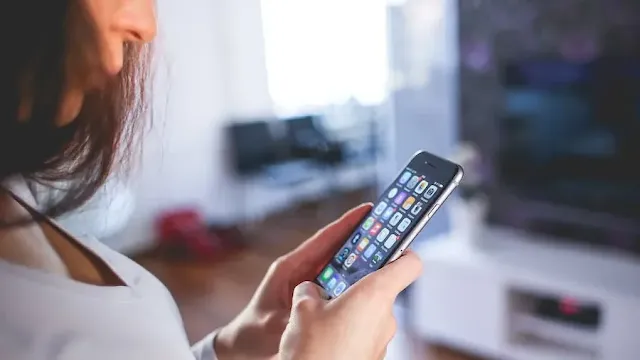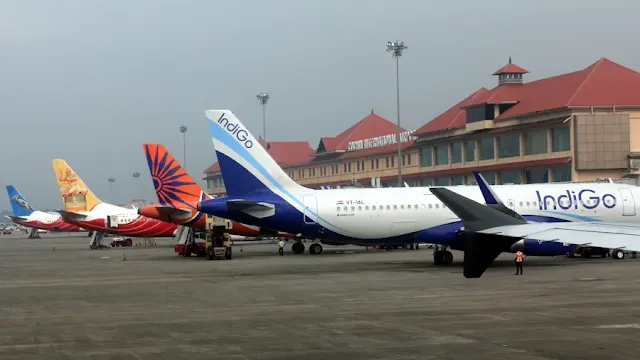Missing a flight can feel like a travel disaster—but don’t worry, it doesn’t have to derail your entire trip. Whether you overslept, hit unexpected traffic, or were stuck in a long security line, it happens to the best of us. Even missing a tight layover or navigating an unfamiliar airport in a foreign country can land you in this situation.
So… what now? First things first—don’t panic! There are plenty of ways to bounce back. This guide walks you through exactly what happens when you miss your flight: what it means for your ticket, whether you’ll be charged a fee, how to rebook, and even how “skiplagging” might come into play (though it’s not without controversy!). We’ll also share step-by-step tips on what to do right after you miss a flight—and explain your rights depending on your airline and situation. Let’s get you back in the air!
Table of Contents
- What Happens if You Miss Your Flight?
- Do You Get Charged if You Miss a Flight?
- What Happens to My Ticket if I Missed My Flight?
- What Happens if I Overslept and Missed My Flight?
- What Happens if I Miss My Layover Flight?
- What Is Skiplagging on an Airline?
- Understanding Minimum Check-In Times
- Tips for Rebooking After Missing a Flight
- Frequently Asked Questions About Missing a Flight
I’ve missed my fair share of flights—some were totally my fault, others were just bad luck. No matter the reason, the first thing I always do is head straight to the airline desk at the gate. And trust me, that should be your go-to move too.
The gate agents are your best shot at getting quick info on your next steps. In one case, I was rebooked on a flight just an hour later—easy and stress-free. Another time, things were a bit more complicated, and I was directed to the airline’s main help center, where they assisted with rebooking and even helped me sort out a place to stay for the night.
Bottom line: act fast, stay calm, and get to the nearest airline rep—they’re your lifeline when plans go sideways.
What Happens if You Miss Your Flight?
Missing a flight doesn’t mean your trip is over. What happens next depends on why you missed it and your airline’s policies. If you miss a flight due to your own mistake—like oversleeping or arriving late—you may need to pay a fee to rebook, fly standby, or wait for a later flight. However, airlines often show flexibility. For example, I once missed a flight due to oversleeping, called the airline while in a cab, and they rebooked me on the next flight with no hassle. If the airline is at fault, such as a delay causing you to miss a connection, they’ll rebook you at no cost.
Do You Get Charged if You Miss a Flight?
It depends on the airline and your ticket type. Many airlines charge a change fee if you miss your flight due to personal reasons, ranging from $50 to $200 USD, plus any fare difference. Budget airlines like Spirit or Ryanair are often stricter, and you might forfeit your ticket entirely if you have a non-refundable fare. However, if you miss a connecting flight due to an airline delay, you won’t be charged—airlines are obligated to rebook you for free under most circumstances.
What Happens to My Ticket if I Missed My Flight?
Your ticket isn’t automatically voided in most cases. If you miss your flight, contact the airline immediately. They may allow you to fly standby on a later flight or rebook you for a fee. However, failing to notify the airline can lead to complications. For instance, I once missed an outbound flight due to a mechanical issue and didn’t confirm my return. The airline (United) canceled my return ticket because I wasn’t on the scheduled outbound flight, even though they gave me the miles! Always confirm your return flight if your outbound is rebooked to avoid losing your ticket.
What Happens if I Overslept and Missed My Flight?
Oversleeping is a common reason for missing flights, and airlines often deal with this situation. If you overslept, call the airline as soon as possible. They might rebook you on the next available flight, often for a fee. In my experience, I overslept once, called while rushing to the airport, and the airline rebooked me on a later flight with no issues. Alternatively, they might offer standby options or a confirmed seat on a flight later in the day or the next day. Be polite and accept responsibility—it goes a long way with customer service agents.
What Happens if I Miss My Layover Flight?
If you miss a layover flight due to a delay on your first flight, the airline will rebook you on the next available flight at no cost—this is standard policy for most carriers. However, if you miss the connection due to your own delay (e.g., taking too long at the airport), you might face a rebooking fee, depending on the airline. Always check your itinerary for tight layovers; a minimum connection time of 1-2 hours for domestic flights and 2-3 hours for international flights is recommended to avoid missing your next flight.
What Is Skiplagging on an Airline?
Skiplagging, also known as hidden-city ticketing, is a controversial travel hack where you book a flight with a layover at your intended destination and skip the final leg. For example, a flight from New York to Chicago via Atlanta might be cheaper than a direct New York to Atlanta flight, so you’d book the former and get off in Atlanta. While this can save money, airlines frown upon it. If caught, you might face penalties like losing frequent flyer miles, being banned from the airline, or even being charged the fare difference. Skiplagging also risks complications if you miss your flight, as airlines may cancel the rest of your itinerary.
Understanding Minimum Check-In Times
Every flight has a minimum check-in time, typically 30-45 minutes for domestic flights and 60-90 minutes for international flights. These cutoffs are listed on the airline’s website. Some airports, like those with heightened security or logistical challenges, may have earlier deadlines. For example, international flights often require earlier check-in due to immigration procedures. If you miss the cutoff, the airline isn’t obligated to help, but you can call and plead your case. A good approach is to say, “I didn’t verify the minimum check-in time and arrived too late. What are my options?” You might be rebooked, though you may need to wait a day or two.
Tips for Rebooking After Missing a Flight
- Contact the Airline Immediately: Call or visit the airline’s counter as soon as you realize you’ll miss your flight. Quick action increases your chances of getting rebooked.
- Be Polite and Honest: Accept responsibility if the miss was your fault. A calm, respectful tone can encourage agents to help you more willingly.
- Check Your Return Flight: If your outbound flight is rebooked, confirm your return flight. Failing to do so might lead to cancellation, as I learned with United.
- Know Your Ticket Type: Refundable tickets offer more flexibility. Non-refundable fares often incur fees for changes, so review your fare rules beforehand.
- Consider Standby Options: If no confirmed seats are available, ask about flying standby on the next flight to your destination.
Missing a flight doesn’t have to derail your plans. Airlines are often more accommodating than they seem, and with the right approach, you’ll be on your way in no time. Safe travels!
Frequently Asked Questions About Missing a Flight
What Happens if You Miss Your Flight?
It depends on the reason. If it’s your fault, you may need to pay a fee to rebook or fly standby. If the airline caused the delay, they’ll rebook you for free.
Do You Get Charged if You Miss a Flight?
Yes, if it’s your fault, many airlines charge a fee ($50-$200 USD) plus fare differences. If the airline caused the miss, you won’t be charged.
What Happens to My Ticket if I Missed My Flight?
Your ticket isn’t usually voided. Contact the airline to rebook, often for a fee. Confirm your return flight, as missing the outbound might cancel the return.
What Happens if I Overslept and Missed My Flight?
Call the airline immediately. They might rebook you for a fee, offer standby, or schedule you on a later flight. Be polite and accept responsibility.
What Happens if I Miss My Layover Flight?
If it’s due to an airline delay, you’ll be rebooked for free. If it’s your fault, you may face a rebooking fee, depending on the airline.
Is There a Fee if I Miss My Flight?
Yes, if the miss is your fault, most airlines charge a fee ($50-$200 USD). No fee applies if the airline caused the delay.
What Is Skiplagging on an Airline?
Skiplagging is booking a flight with a layover at your intended destination and skipping the final leg. It can save money but risks penalties from airlines.













